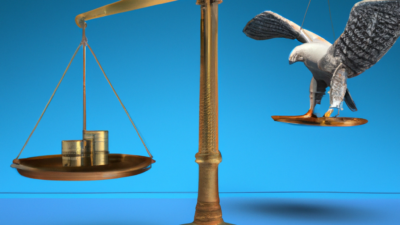**Understanding Fiscal Policy: Navigating Economic Stability and Growth**
In the complex world of economics, fiscal policy stands as a cornerstone of government strategy, wielding significant influence over a nation's economic health. At its core, fiscal policy involves the use of government spending and taxation to steer the economy towards desired objectives such as growth, employment, and price stability. As nations grapple with economic challenges ranging from recessions to inflation, the role of fiscal policy becomes increasingly pivotal. This article delves into the intricacies of fiscal policy, exploring its mechanisms, impacts, and the delicate balance policymakers must maintain to foster sustainable economic prosperity. By examining historical precedents, contemporary approaches, and theoretical underpinnings, we aim to provide a comprehensive understanding of how fiscal policy operates and why it remains an essential tool in the economic arsenal of governments worldwide.
Certainly! Below is a suggested content outline for an article on fiscal policy:
Fiscal policy refers to the use of government spending and taxation to influence the economy. It is one of the key tools used by governments to manage economic performance, often alongside monetary policy, which is managed by central banks. The primary goals of fiscal policy are to promote economic growth, reduce unemployment, and stabilize prices.
### Types of Fiscal Policy
1. **Expansionary Fiscal Policy**: This approach is typically used during periods of recession or economic downturn. The government increases its spending on public services, infrastructure projects, and social programs, or cuts taxes to stimulate demand. The idea is to inject more money into the economy, encouraging consumer spending and investment by businesses, which in turn should lead to job creation and economic growth.
2. **Contractionary Fiscal Policy**: This is used when the economy is overheating, characterized by high inflation. The government may reduce its spending or increase taxes to withdraw money from the economy. The aim is to cool down economic activity and bring inflation under control.
### Mechanisms of Fiscal Policy
– **Government Spending**: Direct expenditures on goods and services, public sector salaries, and social benefits (like unemployment insurance) inject money into the economy. Infrastructure projects, in particular, can have a significant multiplier effect, as they create jobs and stimulate demand for materials and services.
– **Taxation**: Adjusting tax rates and tax structures can influence the disposable income of households and the investment decisions of businesses. Lowering taxes increases disposable income and can stimulate spending, while higher taxes can reduce spending and cool down an overheated economy.
### Fiscal Policy and Economic Indicators
Fiscal policy decisions are often guided by key economic indicators such as GDP growth rates, unemployment rates, and inflation rates. Policymakers analyze these indicators to determine the appropriate fiscal measures needed to achieve desired economic outcomes.
### Challenges and Limitations
1. **Time Lags**: Fiscal policy is subject to implementation lags. It takes time for policymakers to recognize economic problems, formulate responses, and implement changes. The effects of these changes also take time to manifest in the economy.
2. **Political Constraints**: Fiscal policy decisions are often influenced by political considerations. This can lead to suboptimal policy choices, such as excessive spending during election years or reluctance to cut popular programs even when necessary.
3. **Budget Deficits and Public Debt**: Expansionary fiscal policies can lead to budget deficits, where government spending exceeds revenue. Over time, this can accumulate into significant public debt, which can constrain future fiscal policy options and potentially lead to higher interest rates.
4. **Crowding Out Effect**: Increased government borrowing can lead to higher interest rates, which might crowd out private investment. This can mitigate the stimulative effects of expansionary fiscal policy.
### Conclusion
Fiscal policy is a powerful tool for managing economic performance, but it comes with its own set of challenges and limitations. Effective fiscal policy requires careful analysis of economic conditions, timely implementation, and sometimes difficult political decisions. When used appropriately, it has the potential to promote sustainable economic growth, reduce unemployment, and maintain price stability.













